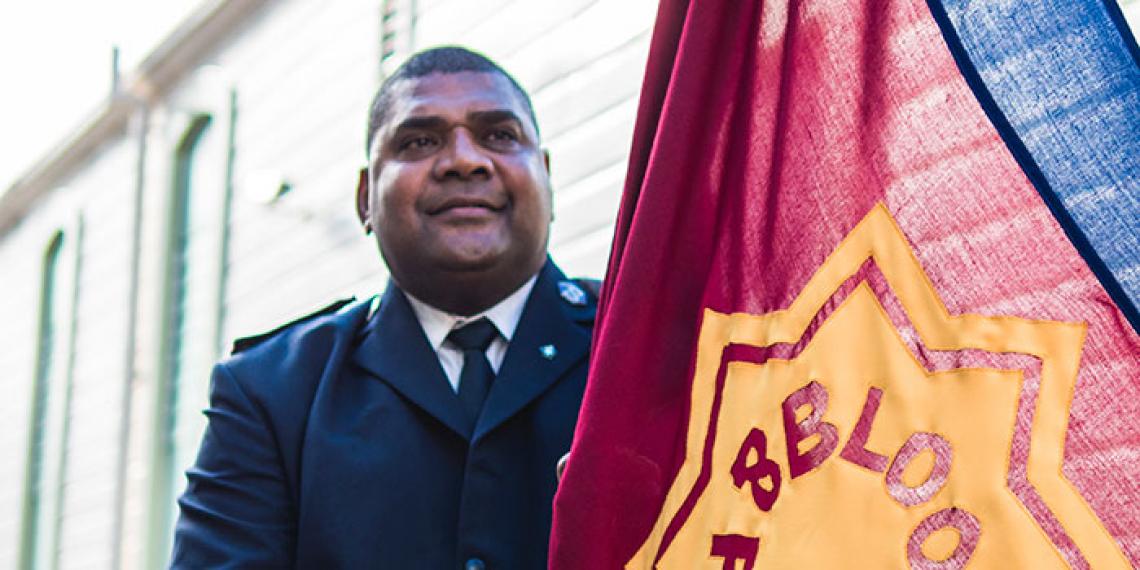You are here
Flying the flag

Ive been fascinated and frustrated by the campaign to change the New Zealand flag. Fascinated by some of the options put forward as designs—and frustrated at the process and the huge expense involved.
Although I’m comfortable with our current flag, the option I would have preferred if it is to be replaced didn’t make the final cut. (And no, it wasn’t the legendary one of the kiwi firing lasers from its eyes!)
The New Zealand Flag Consideration Panel noted the following in an open letter to the public: ‘A great flag should be distinctive and so simple it can be drawn by a child from memory. A great flag is timeless and communicates swiftly and potently the essence of the country it represents. A flag should carry sufficient dignity to be appropriate for all situations’.
You could certainly say that about the Salvation Army’s flag. Designed by the Army’s co-founder Catherine Booth, the original Army flag (which has changed only a little over the years) made its debut at a ‘war congress’ in September 1878.
The flag’s blue border represents the holiness and purity of God the Father; the red represents the sacrificial blood of Jesus the Son of God; and the yellow star represents God the Holy Spirit, with its ‘Blood & Fire’ motto a reminder that we are saved from sin by the blood of Jesus and that the fire of the Holy Spirit helps us live holy lives for God. Catherine Booth hoped the flag would be adopted as a symbol of devotion to the Army’s great purpose of soul saving.
This year, Joe Serevi—with his wife Jeannine—will be flying the Army flag in Clendon, in the South Auckland suburb of Manurewa, as The Salvation Army plants a new mission there.
To Joe, the Army flag has multiple meanings—and most speak more strongly to those who march under the Army’s colours than those who don’t. To the community, the Army flag signals that The Salvation Army is present and available. But to Salvationists, the flag is an even stronger reminder of what their own focus needs to be.
‘The flag reminds me there is a spiritual battle going on,’ Joe says. ‘There is desperate need in New Zealand—physical, emotional and spiritual. And these needs can be met through our triune God. It’s a Salvation Army flag, so it reminds me that we have a way of doing things in The Salvation Army—we want to meet people’s needs and love them, so they can come to know Christ.’
Joe continues, ‘The flag reminds me I represent God, so I must have God with me in my ministry. I can’t do anything without God! It also reminds me I must be Christ-like in my community if I am to do God’s will and build his kingdom.
‘Most of all, the flag reminds me about God’s love. If we don’t carry that love in our hearts then even if we carry the flag with us, we can’t do anything useful. The Salvation Army flag is really about pointing people to a loving God.’
Because God’s love never fails, the Army flag has never in its history flown at half-mast. As an early Salvation Army ditty puts it: ‘To the end of the world, our flag’s unfurled. We’ll never let the old flag fall!’
by Christina Tyson (c) 'War Cry' magazine, 6 February 2016, pp 3.
You can read 'War Cry' at your nearest Salvation Army church or centre, or subscribe through Salvationist Resources.